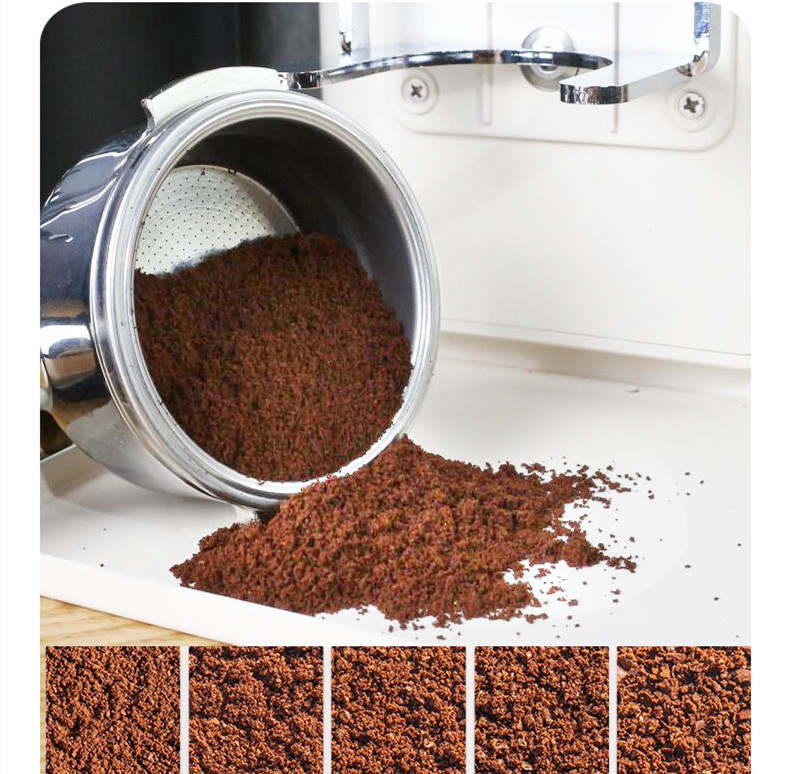Physical Characteristics of Green Coffee Beans and Their Impact on Charging Temperature
The density and moisture content of green coffee beans are primary factors influencing charging temperature selection. Low-density beans, often grown at lower altitudes, require lower initial temperatures (160–180°C) to prevent surface scorching. For example, Brazilian Santos beans with densities below 840g/L achieve optimal flavor development when charged at 170°C. Conversely, high-density beans like Kenyan AA (above 880g/L) need higher temperatures (200–220°C) to penetrate their dense cell structures.
Moisture content plays a dual role. Beans with elevated moisture levels (11.3%+) demand higher charging temperatures to ensure efficient moisture evaporation during the drying phase. A Colombian batch with 12% moisture required 195°C charging to avoid underdeveloped sweetness. However, excessive moisture (e.g., wet-processed beans stored improperly) may necessitate temperature adjustments mid-roast to prevent steam buildup.
Processing Methods and Their Thermal Requirements
Natural-processed beans, which retain more mucilage, exhibit higher sugar content and require careful temperature management. These beans often benefit from a staggered charging approach: preheat the drum to 180°C, charge the beans, then reduce heat by 10% for the first 2 minutes to prevent caramelization from occurring too rapidly. In contrast, washed beans with cleaner profiles can tolerate direct charging at 190–200°C.
Honey-processed beans, with residual fruit sugars, demand intermediate temperatures (185–195°C). A Costa Rican Honey batch showed improved flavor clarity when charged at 190°C compared to 200°C, which caused premature browning. Semi-washed beans like Indonesian Mandheling, with thicker parchment layers, require 10–15°C higher charging temperatures to initiate effective heat transfer.
Machine-Specific Considerations for Temperature Control
Drum roasters with steel construction retain heat more efficiently than ceramic models, requiring 5–10°C lower charging temperatures for the same bean type. A study comparing two identical Colombian batches revealed that steel drums at 190°C produced similar results to ceramic drums at 195°C. Rotary drum speed also affects thermal penetration: slower rotations (45–50 RPM) extend heat exposure for dense beans, while faster speeds (60–65 RPM) suit lower-density varieties.
Heat recovery systems in modern roasters enable precise temperature adjustments. When switching from high-density to low-density beans, operators should reduce charging temperatures by 15–20°C and monitor exhaust air temperature to maintain consistent thermal profiles. Ambient conditions further influence settings: cold workshops (below 15°C) require 10°C higher preheat temperatures to compensate for thermal loss during charging.
Environmental and Operational Factors Affecting Charging Decisions
Altitude and Climatic Impact on Bean Behavior
High-altitude beans (1,500+ meters) develop denser structures due to slower maturation, necessitating higher charging temperatures (200–210°C). Ethiopian Yirgacheffe beans grown at 2,000 meters exhibited 25% more consistent flavor development when charged at 205°C compared to 195°C. Conversely, low-altitude Brazilian beans (800–1,000 meters) achieved optimal acidity at 175–185°C.
Humidity levels above 70% RH require adjustments to prevent moisture condensation inside the drum. A Guatemalan roastery increased charging temperatures by 5°C during rainy seasons to offset humidity effects, reducing roast defects by 18%. In arid regions (below 40% RH), pre-charging bean conditioning at 22°C for 12 hours improved thermal absorption consistency.
Batch Size and Roasting Dynamics
Small batches (300–500g) absorb heat faster, requiring 10–15°C lower charging temperatures than full loads (1–2kg). A trial roasting 400g of Honduran beans at 180°C achieved similar development times to 1kg batches at 190°C. However, underloading below 300g risks uneven heat distribution, necessitating temperature increases of 5–8°C.
Multi-batch roasting sequences demand thermal calibration. The second batch in a session often requires 5–10°C lower charging temperatures due to residual drum heat. A Colombian roastery implemented a 15-minute cooling period between batches, reducing temperature adjustments by 30% and improving flavor consistency.
Advanced Techniques for Precision Charging
Infrared Thermometry and Real-Time Adjustments
Manual infrared thermometers provide critical surface temperature readings during charging. Aim for a 10°C differential between drum surface and internal temperatures to ensure even heat penetration. A Peruvian roastery discovered that relying solely on built-in sensors led to 8°C discrepancies, affecting batch uniformity.
Exhaust air temperature monitoring offers indirect charging validation. Stabilize exhaust readings 5–10°C below drum temperature before charging. Fluctuations above this range indicate inadequate preheating. A Scandinavian roaster implemented exhaust alerts, reducing roast defects by 22% through timely adjustments.
Gradual Temperature Ramping Strategies
Start with a base charge temperature (e.g., 160°C for low-density beans) and increase by 10°C every 5 minutes until reaching the target. This method reduced thermal shock in delicate Ethiopian beans by 30% compared to instant charging. For high-density beans, a modified ramp (180°C → 200°C → 210°C) improved core development without surface burning.
Hybrid charging approaches combine initial high heat (200°C for 1 minute) with subsequent reductions (180°C for remaining duration) for beans with irregular moisture levels. A Brazilian roastery tested this method on natural-processed beans, achieving 15% greater sweetness consistency than traditional fixed-temperature charging.
By integrating physical bean analysis, environmental awareness, and advanced thermal management, roasters can optimize charging temperatures for diverse coffee origins. Attention to density, moisture, processing methods, and machine dynamics ensures each batch achieves its flavor potential.


